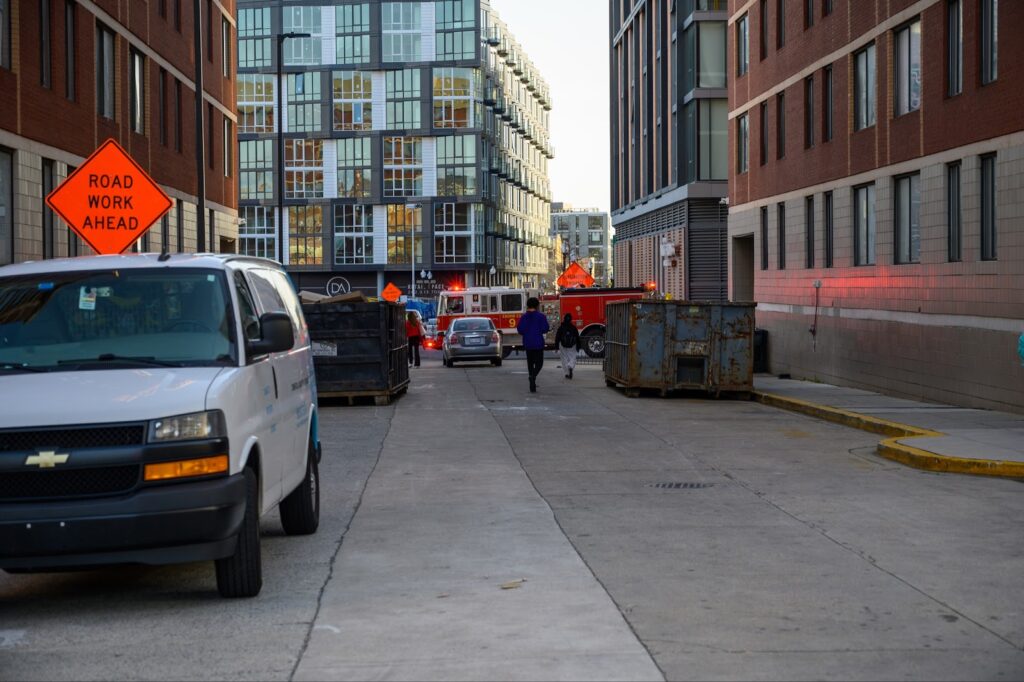As the cost of living continues to increase around the country and in the nation’s capital, Howard University students endure housing challenges as well as D.C.’s high rental costs.

Located in Washington D.C.’s historic Shaw neighborhood, Howard University has over 10,000 enrolled undergraduate and graduate students. With the increasing cost of living in the District and around the nation, Howard’s upperclassmen students are often unable to live on campus after completing their second year and instead live in off-campus accommodations in the D.C. area.
Howard students experience the brunt of increasing rent in the nation’s capital, as the apartments closest to the university, such as Trellis House, The Wren and The Shay Apartments, have high rental prices. In 2021, the U.S. Census American Community Survey (ACS) revealed that the District of Columbia had the third-highest average rent in the country.
The apartment complexes have a price range between $2,120 to $2,148 for a studio apartment, with steadily increasing prices for more square footage, according to Trellis House, The Wren and The Shay Apartments.
Although the prices are proportional to the average rent throughout the D.C. area, students attending the university struggle to get the funds to pay for rent, utilities and other necessities.
Sheamari Whitaker, a junior political science major from Philadelphia, revealed that during her experience apartment hunting the lowest rent price she encountered was $1,250 at The Woodner, which included utilities, and the most expensive was a studio apartment at Trellis House for $2,300.
“My biggest concern was figuring out how I can afford rent. D.C. is one of the most expensive cities to live in, especially where the university is located,” Whitaker said.
After settling on $1,350 for rent, and between $900 to $1,000 for other necessities and utilities, Whitaker now worries about being able to afford the cost of living in the D.C. metropolitan area throughout the year.
Although she has financial support from her parents and works a part-time job, Whitaker emphasized that “it is still expensive for [her].”
The median rental prices in Washington D.C. are larger than the national average. Many factors contribute to this, including the city’s vibrance and political influence, making it a hot spot for young adults and politicians.
In recent years, some neighborhoods have been experiencing uncharacteristic surges in their cost of living. In the Shaw community specifically, gentrification has contributed significantly to the rise in prices for housing over the past two decades.
NPR reported that in 1995, the average cost of a home in Shaw was $147,000 but by 2021 that number has grown to $781,000. This comes as the neighborhood continues to experience an influx of white homeowners moving into the neighborhood and minority-owned businesses throughout the community closing to make way for big corporations and franchises.
Many Howard students worry about what such changes could mean for the university and students who reside in off-campus housing.
“Because of how low the chance of getting on-campus housing is for upperclassmen, the demand for off-campus housing heightens and apartments capitalize on that,” Alexis Williams, a junior biology major, said.
Families of some Bison have also expressed their disappointment in Howard’s management of housing, and believe students should be enabled to focus on their studies without worrying about housing costs.
“Understandably, [my parents] were disappointed but not surprised,” Williams, who is from Charlotte, North Carolina, explained. “We just see it as playing the cards we’ve been dealt with and remaining grateful we found a place that fit all criteria we were looking for.”
Whitaker’s mother, Maya Wilson, expressed similar sentiments to her daughter’s housing situation. “I have a realization that this is [the] sole option that she will have in order to finish her studies at the university,” Wilson said.
Wilson also expressed her concerns about her child living in D.C. off-campus, and admitted to being worried about her daughter’s food security and “being able to afford essentials needs as a student and tenant in the space she’s living in, as well as being at Howard.”
As students navigate life transitions such as relocating for college, they are also thrilled to start their independent lives in D.C.
“While it is a bit of a burden due to the high cost of living in Washington, D.C., it is also a little exciting,” Whitaker said. “I get to have my very first apartment in my own name in a beautiful city.”
Copy edited by Alana Matthew

